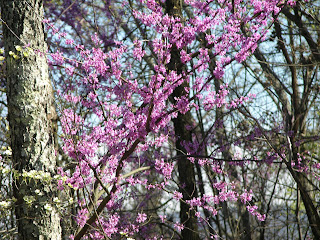Turf War.....




- It all started innocently enough......one of my co-workers asked me what was going on with all the birds flying by the office windows.....
- After a glance at the activity outside, I went for the camera.......
- There is a holly tree near the corner of our office, approximately 20' in height and it is loaded with red berries......
- The berries are a favorite food of the Cedar Waxwing (Bombycilla), who were waiting, not always patiently, in the nearby Silver Maple trees around our parking lot (bottom two photos...this is the male of the species).
- Two of the Waxwings can be seen, along with the holly tree, in the photo 2nd from the top.....
- It did not take long to understand why the nomadic Waxwings were waiting, and not being allowed to enjoy their desired food of the morning........
- It seems the holly tree was the nesting site of a Northern Mockingbird (Mimus) that is shown in a typical defiant pose ( top photo) on the roof of our office......
- Periodically the 15-20 Waxwings would ascend on the holly tree, and pluck as many berries as possible before the Mockingbird would aggressively drive them away.....
- This scene played out several times over a 30-40 minute period, and I must say the Mockingbird seemed to win this turf war......as the tree is still loaded with berries....
- The Waxwings would try and try for the berries, but were never allowed more than a few seconds of delight before the proud, territorial Mockingbird would arrive on the scene .....
- The Waxwings wander continuously and photos of these beautiful birds are hard to come by. The male Waxwing is striking...and can identified by the black 'mask' through the eyes, the crest, yellow band at the tail tip, and red tips to the secondary feathers.
- At my cabin in Stone Creek, I heard the first Whippoorwill of 2009, just prior to dusk, on April 24th.




